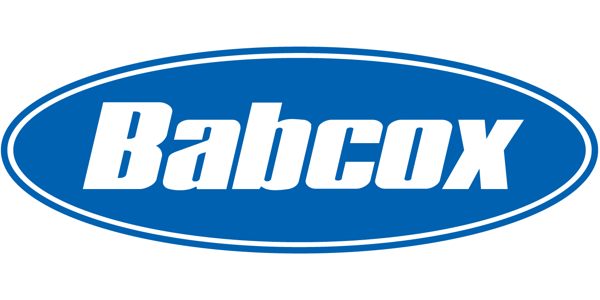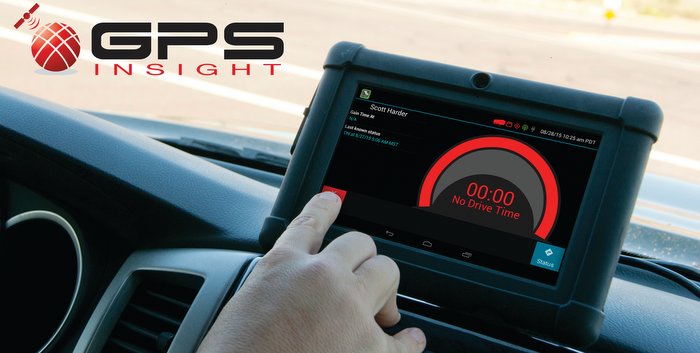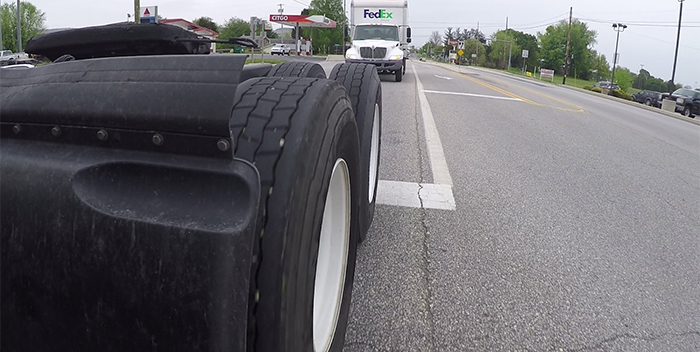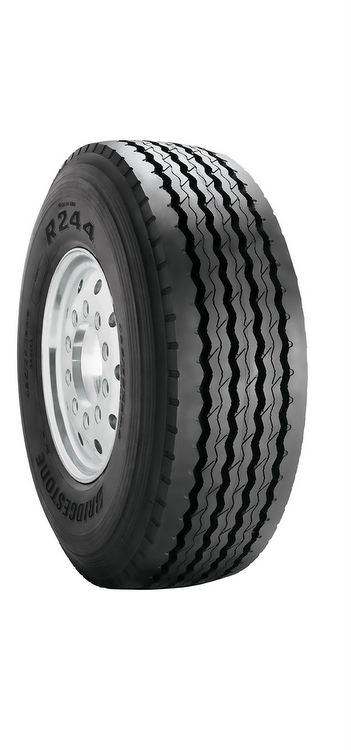Only 43.6 percent of all tires are inflated within five PSI of proper air pressure, according to a study by The Technology & Maintenance Council (TMC) of American Trucking Associations in conjunction with nine of the country’s leading tire manufacturers. The study also indicated that 21.6 percent of all vehicles had at least one tire underinflated by 20 PSI or more.
Having tracked more than 35,000 tires on 4,700 trucks and tractors, 1,300 trailers and 1,500 motor coaches, the TMC study lends credence to the argument that proper tire pressure inflation is one of the most pressing concerns in the trucking industry. For most fleets, tires represent one of the largest costs, in many cases second only to fuel as an operating expense.
When tires are underinflated, costs rise from reduced fuel economy, premature wear and increased road calls. By some calculations, a tire that is underinflated can cut usable life by 25 percent or more and consume as much as 10 percent of a vehicle’s fuel efficiency. In addition, loss of inflation leading to a blowout can cause costly damage to other vehicle components.
For these reasons, fleets are increasingly focusing on maintaining proper tire inflation pressures on the road. In a growing number of operations, tire pressure monitoring and automatic inflation systems are being specified. These technologies, have been validated in a research project conducted by the U.S. Department of Transportation’s Federal Motor Carrier Safety Administration (FMCSA), which sought to evaluate the potential benefits of tire pressure monitoring sensors and automatic inflation systems.
The FMCSA analysis strongly suggests that “the savings potential from tire pressure monitoring and automatic inflation systems could support the purchase price. If tire pressure monitoring and automatic inflation systems available for commercial vehicles could be installed for approximately $1,000 per tractor-trailer combination, return-on-investment periods for an average fleet would be between one and two years,” the report says. “Even for fleets with relatively good tire maintenance practices, fleets which would demonstrate a 25 percent reduction in total cost of improper inflation compared to average, the cost-effectiveness of tire monitoring and automatic inflation systems is still within return periods of less than three years.”
Recent advances in technology have made commercial vehicle automatic tire inflation pressure and monitoring systems more affordable. Now available from a number of suppliers, these solutions are increasingly being specified by fleets of all types and sizes. The following is an overview of most currently available systems:
Dana Corp.’s Commercial Vehicle Systems group (www.roadranger.-com) recently launched SmartWave TPMS (Tire Pressure Monitoring System). SmartWave TPMS provides real-time tire pressure monitoring by sending pressure and temperature data to off-board communication systems. The system also features a record-keeping function and has a temperature-monitoring function to automatically compensate for fluctuations and ensure proper inflation regardless of tire temperature.
SmartWave TPMS alerts drivers via a warning lamp if a tire deviates from the manufacturer’s recommended pressure or approaches a dangerously high temperature. Each tire’s condition also can be graphically indicated on a dash display unit, allowing the driver to see current pressures. The system can inform fleet managers of tire-related issues through telematics systems.
Dana’s portfolio of tire pressure management solutions also includes the Dana Spicer TIMS (Tire Inflation and Monitor System) that is available as a standalone system or integrated with Bendix TABS-6 trailer ABS. With TIMS, tire pressure is checked automatically and when a tire is low, air is directed to the underinflated tire until proper pressure is achieved. Seals and lines in the systems are non-pressurized when inflation is not required using a patented, two-solenoid manifold.
In addition, the manufacturer also offers the Dana Spicer TPCS (Tire Pressure Control System) as a factory-installed option through every major commercial vehicle OEM in North America. Providing inflation and deflate capability to improve mobility on soft soil, severe grades, sand and snow, TPCS also features an integrated driver display module and is operated with dash-mounted rocker switches.
Meritor Tire Inflation System (MTIS) by PSI (www.psi-atis.com or www.arvinmeritor.com) monitors and maintains air pressure at constant and proper levels using the trailer air supply routed to a control box and then into each axle. Acting as a conduit, the axles carry air through a rotary union assembly at the spindle end, which then distributes the air to each tire as needed. A pressure protection valve ensures the integrity of the brake system, and if a tire failure occurs check valves in the delivery lines prevent loss of pressure from the remaining tires.
MTIS, which can be installed on any type of trailer, also features an indicator light that informs the driver of any excessive air pressure loss. The self-contained system can also be used with any type of tractor.
Newly introduced by PSI. and ArvinMeritor is ThermALERT, an advanced technology that detects increased wheel end temperatures and alerts drivers to stop for repairs before serious damage can occur. ThermALERT is an option with MTIS and is available on new trailers assembled with Meritor prepped TN, TQ and P-spindle profile trailer axles.
MTIS with ThermALERT detects air that is escaping from the axle’s thermal plug and out through the hubcap tee vent, which occurs if a wheel end is operating at an abnormally high temperature. If a ThermALERT equipped wheel end reaches high temperatures, an audible noise is heard and an indicator light located on the trailer, which is clearly visible from the cab, comes on to alert the driver.
For MTIS with ThermALERT, ArvinMeritor supplies complete kits that incorporate a new control box, six-vent hubcaps, specially designed spindle press plugs, a new LED light and a system warning decal, which outlines operating guidelines for the driver.
Also new from the manufacturer is a PLC display from Meritor WABCO that enables monitoring of trailer-mounted systems. A significant addition to the PLC display’s communications capabilities is the transmission of critical information from the MTIS by PSI. Linking trailers and tractors and providing drivers with information concerning the status of a range of systems, the PLC display’s viewing screen mounts to the tractor’s instrument panel for easy visibility.
Michelin North America (www.michelin.com) has announced it will work with WABCO to introduce an Integrated Vehicle Tire Pressure Monitoring System (IVTM) to the North American trucking industry. Using an algorithm that constantly compares information between and across axles, IVTM continuously monitors tire pressure and can warn of improper pressure and slow leaks. The system consists of external wheel mounted modules that are connected to the tire valves with pneumatic hoses.
IVTM modules regularly measure and transmit tire inflation pressure data via radio frequency to an electronic control unit (ECU), which transmits them to a dash mounted display that features visual and acoustic signals to warn drivers of abnormally low tire pressure, slow leaks and tire position. Once a potential problem is detected, the in-cab display monitor warning lamps also advise the driver of the appropriate corrective action.
Trailers individually equipped with their own IVTM ECU can transmit tire inflation data by RF to any IVTM equipped tractor to which they are coupled. IVTM can also be connected directly to the vehicle’s controller area network (CAN) databus and integrate tire inflation and early warning information into a vehicle’s multifunctional dashboard display. The system is compatible with existing telematic and fleet management systems and can be retrofitted on most North American vehicle configurations.
Michelin also introduced its eTire II second-generation sensor patch for the eTire pressure and asset monitoring system. Temperature compensation allows the eTire II system to identify vehicles with slow leaks as they re-enter a terminal.
Developed by Michelin Americas Research and Development Corp. (MARC) and Honeywell Sensing & Control under a joint development agreement, the eTire II system includes the sensor patch, which contains two main components, an RFID module and a battery-free pressure/temperature sensor that is applied to the interior of the tire’s sidewall. Also part of the system is a redesigned hand-held reader that can interrogate the patch via radio frequency, and a newly revamped drive-by reader that retrieves the sensor information automatically. BibTrack Internet-based tracking software in the eTire II system allows the fleet to monitor tire assets.
BAT RF System by STEMCO (www.BATRF.com) is a tire pressure monitoring system designed to record data including air pressure and mileage. Fleets can use the data to discover leaking tires, analyze tire performance, calculate miles per gallon, identify mismatched duals and support warranty claims, according to the company.
With BAT RF, an RFID HandBAT reader receives data via wireless signals from AirBAT sensor/RF tags mounted on each wheel end and displays readings on its LCD screen. Information includes visual alerts for over- or underinflation. Pressure readings can be viewed from 50 to 150 PSI. Using the company’s TracBAT PRO, the system can be programmed to any specific tire revolution using make, model and size and to provide mileage tracking.
Also offered is DataBAT software that allows fleet managers to download data from the HandBAT reader to a PC and access real-time reports on mileage and tire pressure. Available reports include inflation exceptions, current tag assignments, unassigned tags, list of tags, hardware usage stats, travel distances, fuel usage and fuel economy.
Tire Sentry from Fleet Specialties Co. (www.tiresentry.-com) uses RF microchip technology to continuously monitor tire pressure from inside the cab. This wireless remote sensing system enables low tire pressure to be automatically detected by Microchip Wheel Sensors, which attach to each valve stem and are preset to individual tire pressure requirements. The electronic valve caps incorporate a pressure sensor and a microchip transmitter powered by two standard watch batteries.
Tire Sentry continuously monitors tire pressure and transmits a coded signal to the dash instrument when a loss of tire pressure is detected. A warning light and audible alarm on the dash display instrument shows which tire is losing pressure. The system warns drivers when any tire has lost as little as 8 percent of its normal operating pressure. Models are available for most configurations from six to 22 wheels.









